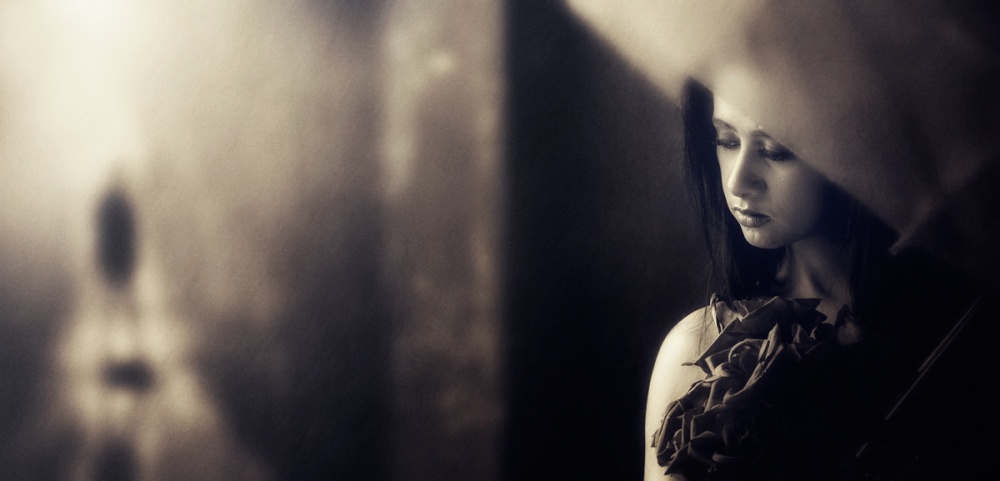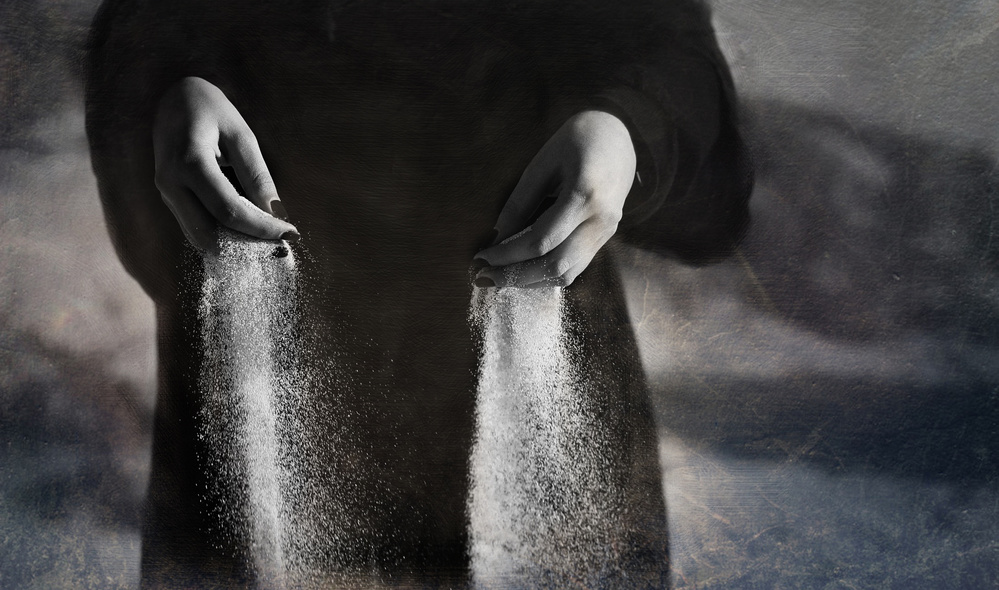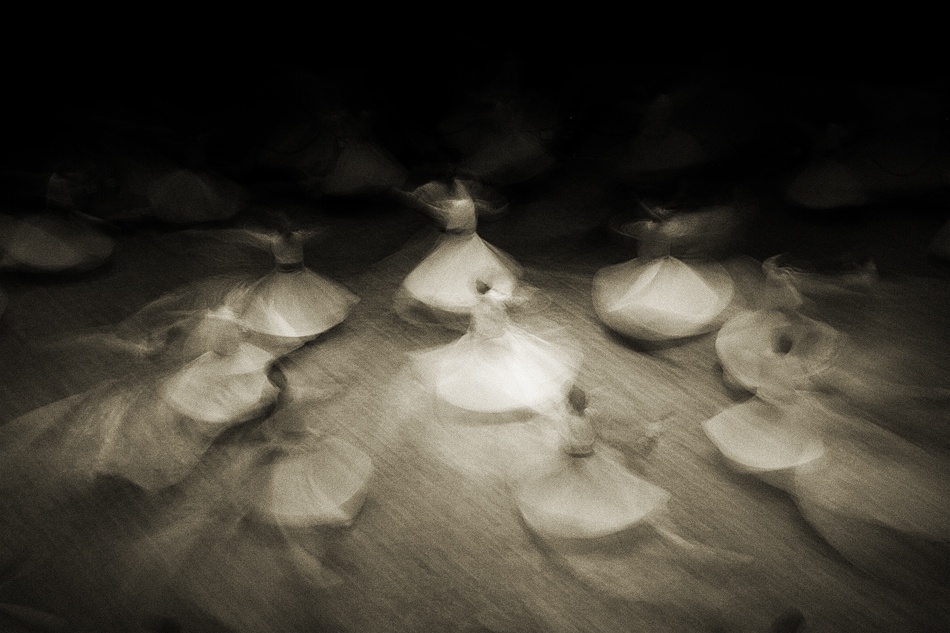Tips & Tricks
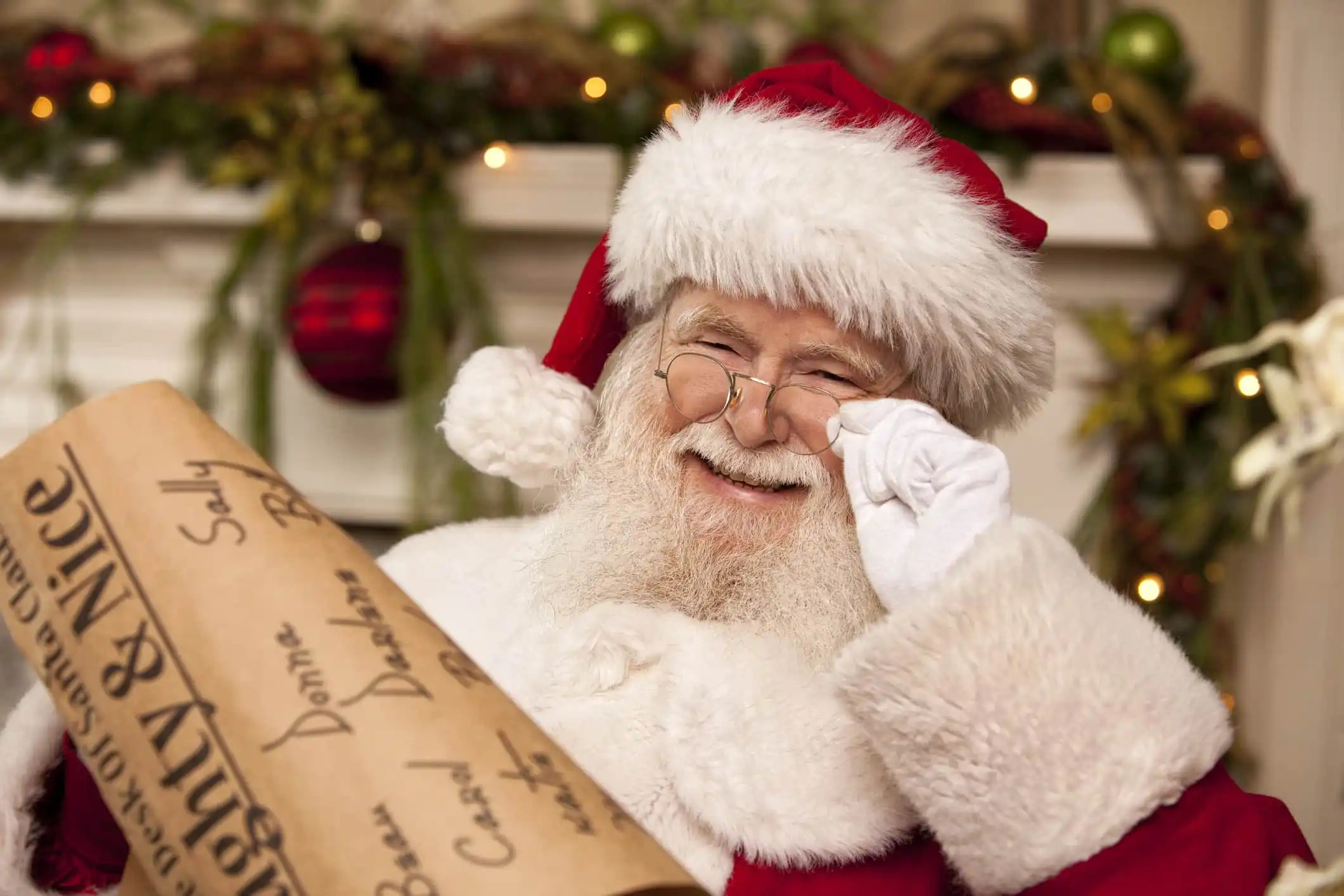
These Images Show How Santa Claus Wasn't Always a Jolly Man in Red
Photography Talk
When I think of Santa Claus, I think of the big fella shown above with the white beard who's dressed in red.
But that conception of Santa is actually quite new in the grand scheme of things.
The modern notion of Santa actually goes way back to the 3rd Century, and his qualities - even his name - have evolved over the years.
On this Christmas Day, I thought it would be fun to offer a short visual history of Santa.
St. Nicholas
![]() Public domain, via Wikimedia Commons
Public domain, via Wikimedia Commons
Today's Jolly Old St. Nick has roots in the 3rd Century, in a man born around 280 A.D. in the city of Patara, in modern-day Turkey.
That man became a monk in adulthood, taking the name St. Nicholas.
Nicholas was well-known for his kindness, particularly after legends developed that he gave away all of his wealth and spent his time helping the sick and the poor.
Over the course of many years of helping others, eventually, Nicholas became known as the protector of sailors and children.
He died on December 6 - the year is unknown - and his life was celebrated on that day with huge feasts.
Fast-forward to the Renaissance, and St. Nicholas was the most revered saint in all of Europe, even maintaining his popularity after the Protestant Reformation, during which veneration of saints was frowned upon.
Sinterklaas & Father Christmas
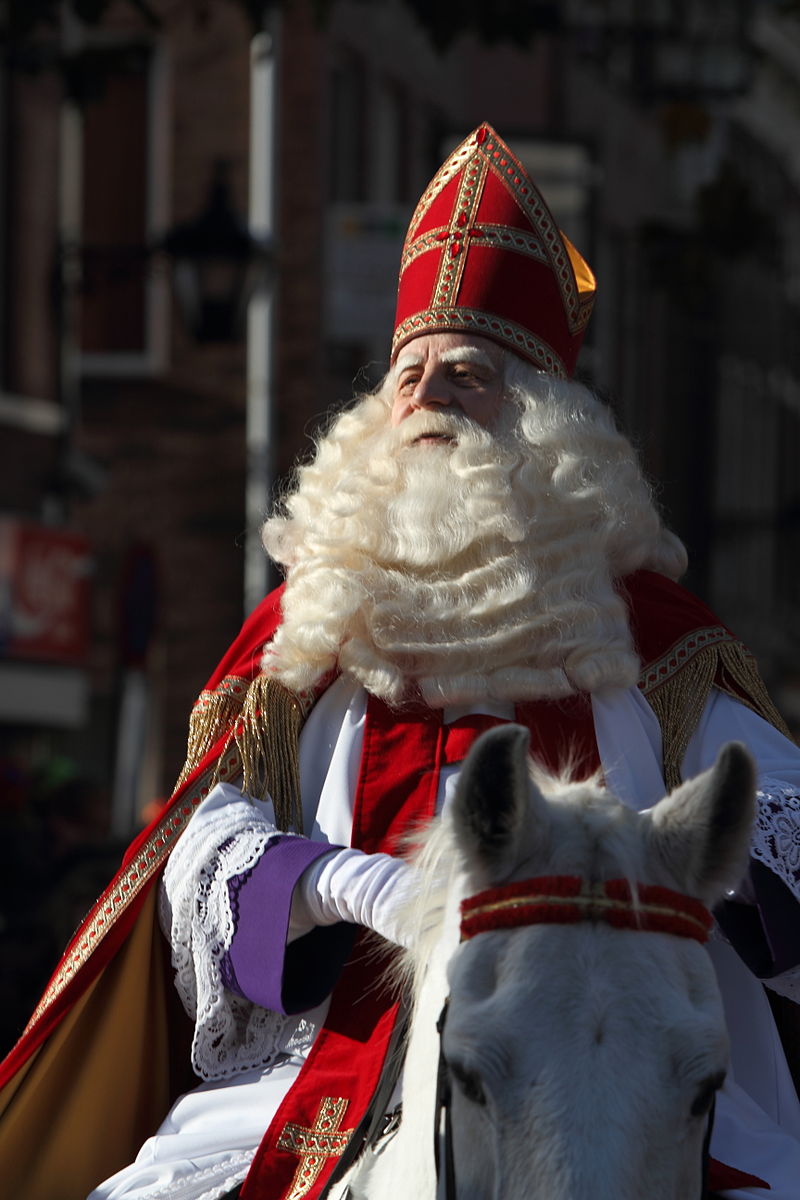 By Sander van der Wel from Netherlands (Intocht van Sinterklaas in Schiedam 2009) [CC BY-SA 2.0 (https://creativecommons.org/licenses/by-sa/2.0)], via Wikimedia Commons
By Sander van der Wel from Netherlands (Intocht van Sinterklaas in Schiedam 2009) [CC BY-SA 2.0 (https://creativecommons.org/licenses/by-sa/2.0)], via Wikimedia Commons
Of all the nations and kingdoms in Europe, Holland had the biggest fascination with St. Nicholas, whom they called Sinterklaas.
Even to this day, many Dutch households celebrate Sinterklaas on December 6, a day on which gifts are given exclusively to children.
For those of us in the United States, the name Santa Claus obviously originated from Sinterklaas, thanks to Dutch immigrants, who, in 1773 and 1774, were featured in a New York newspaper for celebrating the anniversary of Sinterklaas' death.
The Dutch traditions surrounding Santa Claus merged somewhat with English traditions, which during the 16th Century involved celebrations of Father Christmas, good cheer, peace, joy, and so forth.
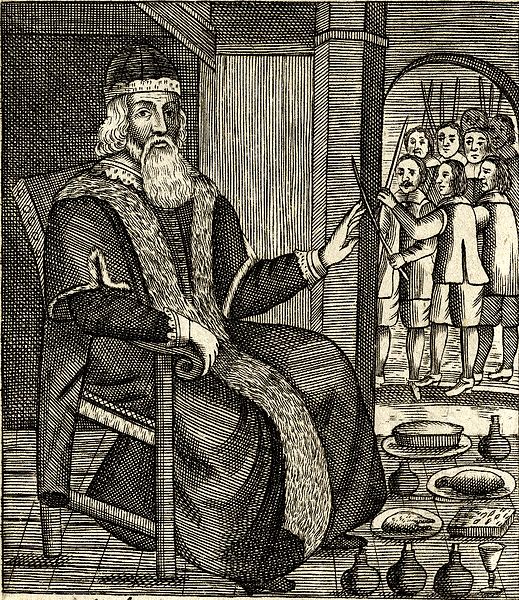 By Josiah King (Folger Shakespeare Library, Washington, D.C.) [Public domain], via Wikimedia Commons
By Josiah King (Folger Shakespeare Library, Washington, D.C.) [Public domain], via Wikimedia Commons
Back then, England had already done away with the feast day for Saint Nicholas on December 6th, instead moving their celebration to Christmas Day.
Back in the United States, in 1804, John Pintard, who was a member of the New York Historical Society, gave gifts to other members of the society in the form of woodcuts of St. Nicholas.
In the background of the engraving were images that evoke thoughts of Santa - stockings over a fireplace filled with goodies.
Yet his signature modern look with the red, fur-lined suit hadn't yet appeared. In fact, there were varying descriptions of Santa at this point, from a man that wore yellow stockings to one who wore a blue hat.
Pop Culture Santa
In 1820, the first variations of modern-day Santa began to be used by stores to advertise Christmas shopping.
By the 1840s, stores were making Santa's appearance a must-see event, with newspapers encouraging parents to bring their kids to meet a real-life Santa in the store.
But the real step forward for modern-day Santa occurred in 1822, when Clement Clarke Moore wrote An Account of a Visit from St. Nicholas for his daughters. You can learn more about this modern evolution of Santa in the video above from the History Channel.
The story described Santa as a "right jolly old elf" who was fat, yet had a magical ability to descend a chimney to bestow gifts on children after arriving at their homes in a miniature sleigh led by eight flying reindeer.
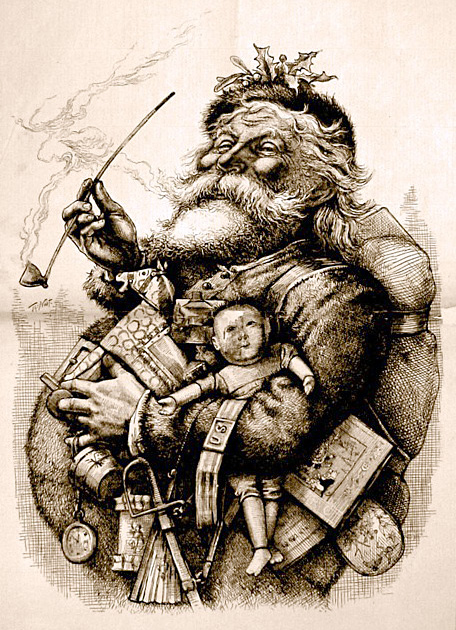 By Thomas Nast [Public domain], via Wikimedia Commons
By Thomas Nast [Public domain], via Wikimedia Commons
That description was used by Thomas Nast in 1881 to draw the first known images of modern-day Santa, a big, happy man with a white beard and a bright red suit with white fur lining.
The cartoon also depicted Santa's workshop at the North Pole, his elf workers, and even Mrs. Claus.
In the 1890s, the Salvation Army tapped into the popularity of this new Santa, dressing up unemployed men in the now-familiar red Santa suits to collect money for the needy by ringing bells on street corners.
Santa Enters the 20th Century
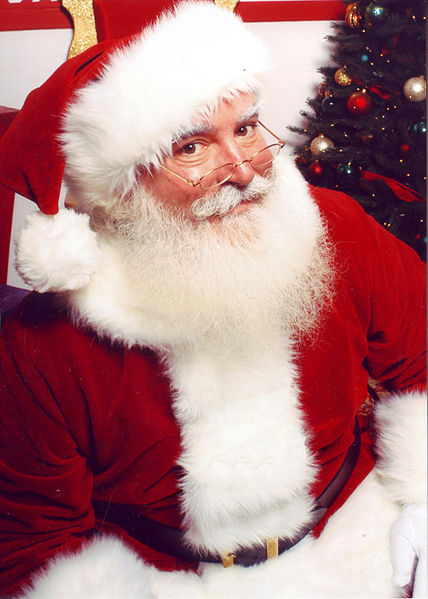 Creative Commons Attribution-Share Alike 2.5 Generic license via Wikimedia Commons.
Creative Commons Attribution-Share Alike 2.5 Generic license via Wikimedia Commons.
In 1902, L. Frank Baum's book, The Life and Adventures of Santa Claus, helped galvanize the modern conception of Santa.
The book cemented Santa as a happy, jolly fellow that wished to bring joy to the lives of children the world over, a duty that was fulfilled by bringing them toys.
By the 1930s, Santa was being used for advertisements of all sorts, perhaps most notably for Coca-Cola, which helped to further his persona as a big, happy older man in a red suit.
Today, though Santa looks a lot different than he used to, the idea of Santa remains the same.
From Saint Nicholas in the 3rd Century helping the poor to Sinterklaas bringing joy to children in post-Reformation Holland to the jolly man in a red suit popular today in western cultures, he's certainly an iconic (and photogenic) figure.
















